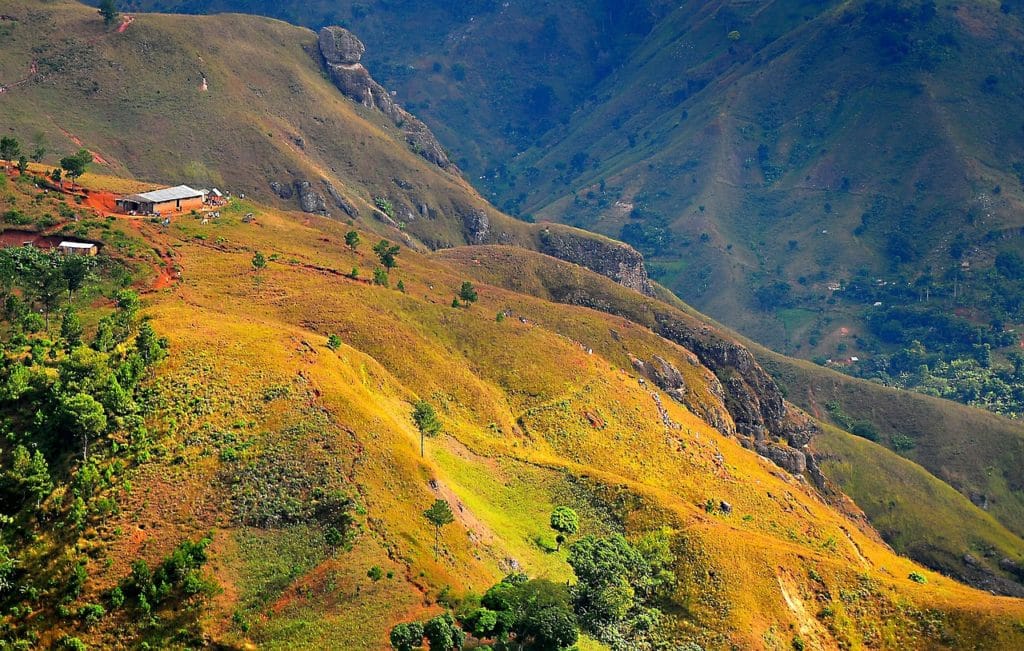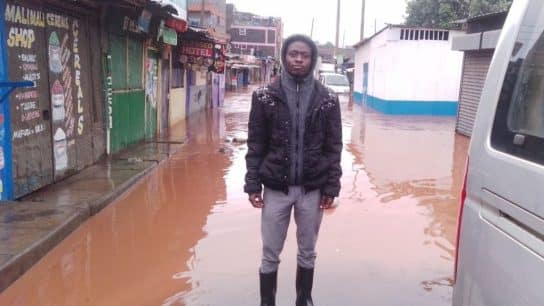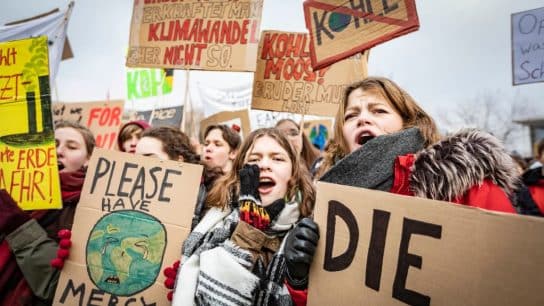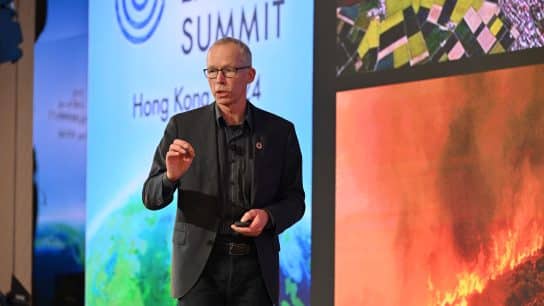Haiti is among the most deforested countries in the world. While deforestation in the country has continued to contribute to other environmental problems such as landslides, addressing the problem remains difficult, owing to the fact that cutting trees to produce charcoal is critical to the survival of the majority of Haiti’s residents. In an exclusive interview with Earth.org, Caitlyn Eberle, a scientist at the United Nations University Institute for Environment and Human Security (UNU-EHS), explains that solutions to combat deforestation in Haiti must align with the needs of charcoal producers and farmers.
—
EO: What are the reasons or causes of deforestation in Haiti and why is it difficult to address the problem?
Eberle: Deforestation in Haiti is a really systemic issue that can be traced back centuries, beginning in force when the French colonial government cleared thousands of hectares of forest for plantations. More recently, with the population in the country increasing rapidly in the 1940s, so did the demand for resources, so forests are often cleared primarily to make new agricultural plots or for harvesting fuelwood.
The problem is difficult to address because of its systemic nature. Deforestation in Haiti happened over centuries and was largely beyond the control of the people that are in power nowadays. Additionally, over 80% of the country’s energy is generated from burning charcoal or firewood, which makes them an important source of rural energy production that contributes even more to the household economy (up to 25%) than agriculture (around 4%). As such, attempting to put limits on forestry practices without providing alternative livelihood support is not going to work.
You might also like: 10 Deforestation Facts You Should Know About
EO: What are the impacts and consequences of deforestation in Haiti?
Eberle: The impacts of deforestation in Haiti and in most places in the world mainly relate to soil stability and health. A lack of forested areas means fewer tree roots can hold the soil in place, increasing the risk of landslides triggered by heavy rain or earthquakes. Deforested slopes also accelerate the process of soil erosion, since the soil is more exposed to wind and rain to transport the soil elsewhere. This exposure to wind and rain also decreases the capacity of the soil to absorb water, creating a pseudo-drought where there is enough rainfall but unavailable for crops.
As more and more land is deforested in attempts to grow food on marginal soils, it becomes increasingly susceptible to erosion and nutrient loss, which furthers the need to deforest more land in search of more fertile soils.
EO: How much of a problem is deforestation in Haiti, especially as climate change remains a major threat? And how is forest loss contributing to climate change?
Eberle: It’s difficult to say which issue is more of a problem because deforestation and climate change impact each individual to a different degree at different times. They do often combine, amplifying the effects of certain issues such as drought or landslide risk. For example, if deforestation-exposed soil is combined with climate change causing stronger, more intense rain and storms, there is more risk of devastating landslides than if only one of those factors existed by itself.
Deforestation does contribute to climate change, as the loss of trees and soil decreases the ecosystem’s ability to store carbon. It’s important to keep in mind that deforestation is just a part of the larger picture of global greenhouse gas emissions and unsustainable consumption.
You might also like: How Does Deforestation Affect the Environment?
EO: In the recently published Interconnected Disaster Risk report, deforestation was highlighted as one of the drivers of risk during the latest earthquake that hit Haiti. Can you explain the relationship between these two phenomena?
Eberle: Deforestation was definitely a driver of risk during the Haiti earthquake disaster, since it contributed to the increased risk of hazards in the form of landslides, but also to the vulnerability of people affected by the earthquake. Landslides not only destroyed roads and blocked rivers, but they also destroyed whole crop yields, disrupting livelihoods and food production systems. A more hidden aspect of deforestation as a driver of earthquake risk is that it increases the vulnerability of people, increasing the risk that they will suffer from a hazard such as an earthquake. Land degradation and erosion brought on by deforestation often push subsistence farmers onto steep terrain in hopes of more fertile soil, putting them at greater risk of landslides. Increasingly degraded soils decrease crop yields, creating economic and food insecurity and making it more difficult for people to cope or recover after a disaster strikes.
EO: What solutions would you proffer to address the issue of deforestation in Haiti?
Eberle: Reforestation and ecosystem restoration at first seem like the best solution to combat deforestation since planting trees on hillsides can help stabilise soil, promote overall ecosystem health and reduce the severity of flood events. However, reforestation and soil conservation projects have often failed because they were not aligned with the needs of local communities. Instead, solutions should focus on working with charcoal producers and farmers to meet their needs. Creating living erosion barriers, such as hedgerows of trees or shrubs, can provide erosion control by capturing soil and water run-off while also allowing farmers to prune the leaves for animal fodder and woody stems for cooking fuel. Agroforestry systems (cultivating food crops between trees) can similarly provide soil stabilisation while providing livelihood and food security benefits from agriculture and forest products.
You might also like: Reconsidering Reforestation and Tree Planting Projects
Many approaches to combat deforestation have focused on banning charcoal production and trade while attempting to reforest areas with fast-growing, exotic species, such as neem and eucalyptus, or promoting the use of more efficient (but expensive) cookstoves. These solutions ignore that charcoal production is a significant source of income and energy for people across the country and that attempting to change such a culturally-ingrained livelihood strategy without a sustainable, affordable alternative is doomed to fail.
EO: Are the government and other institutions putting enough effort into addressing this huge issue?
Eberle: I think there is a lot of good work going on, and people both locally and internationally really care about this issue. However, the problem is often viewed only from this one perspective and solutions presented often seem singularly focused: that the solution to deforestation is to plant more trees. In reality, the issue is much bigger than that. It’s a good start, but livelihoods and well-being need to be protected, and land rights should be formalised so people have the incentive to invest and care about the place they live in. Ideally, these kinds of solutions should be implemented in a “package” to address as many different aspects of the problem at once.
EO: Any last thoughts you would like to share with our readers?
Eberle: A commonly cited estimate puts Haiti’s forest cover at just 2%, but this is an outdated and likely incorrect figure. Recent satellite imagery suggests the figure is closer to 20-30%. It’s really important, however, that the narrative around Haiti is not that it is some deforested moon-scape – it is a lush Caribbean nation with a lot of resources that could use some more focused management.
Featured image by Pixabay
If you enjoyed this interview, make sure to check this out next: A Partnership to Protect the Dulan Forest of Indonesia: An Interview with Dax Dasilva

















